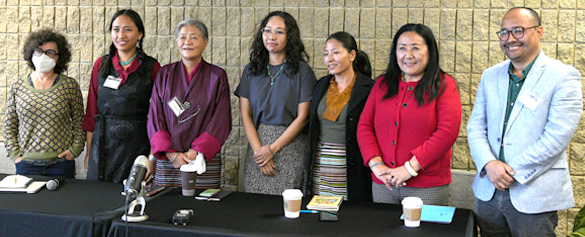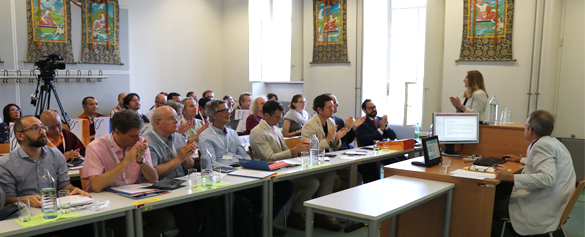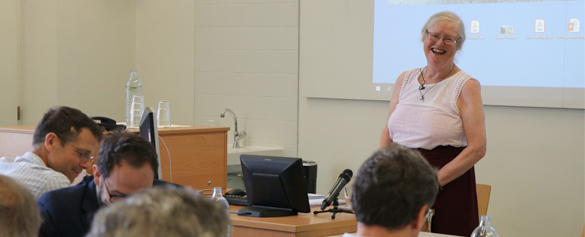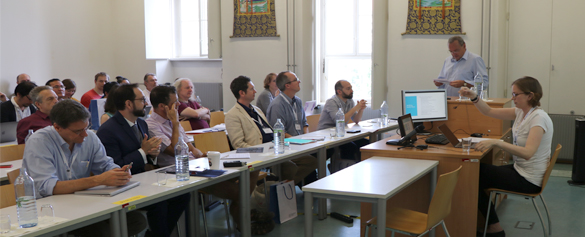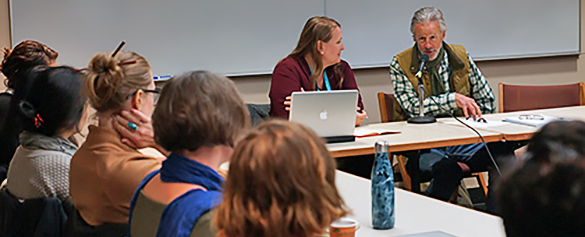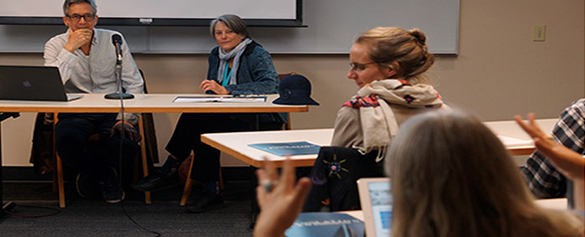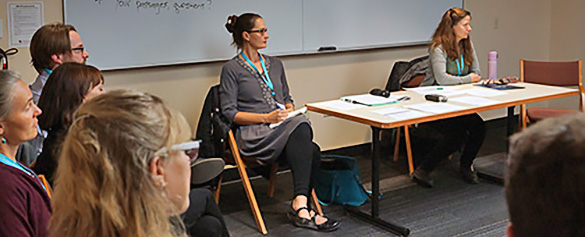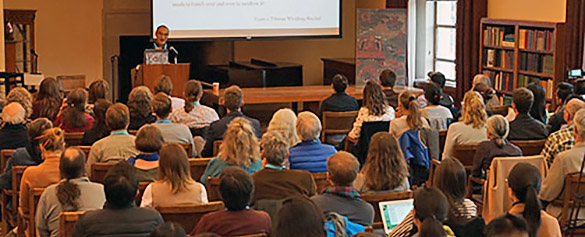Reflections on Translating Women’s Lives and Teachings in the Tibetan Buddhist Tradition
Gwen Witt Dorring2022-12-07T21:37:39-07:00Literary Perspectives from Tibetan and Himalayan Women Writers
Gwen Witt Dorring2022-12-07T21:37:40-07:00Zhang ston Bsod nams grags pa’s Defense of Dol po pa’s Clear-Cut Distinction between Buddha Nature and the Ground Consciousness
Gwen Witt Dorring2022-11-16T23:39:21-07:00Dol po pa Shes rab rgyal mtshan’s (1292-1361) doctrinal position is well known for its clear-cut distinction between an ultimate, unconditioned buddha-nature, which is identical with the ultimate and buddhahood, and the conditioned ground consciousness (ālayavijñāna), including all saṃsāric states of mind emerging from it. This strict distinction excludes from the ultimate anything dependently arisen. Dol po pa’s disciple Zhang ston Bsod nams grags pa (1292-1370) defends his master’s view by addressing opposing statements in the Laṅkāvatārasūtra and the Gaṇḍavyūhasūtra that equate buddha-nature with the ground consciousness. Zhang ston’s discussion constitutes the major part of the introduction to his commentary […]
The impact of a Shentong interpretation of Tathāgatagarbha doctrine from the point of view of a western Buddhist practitioner
Gwen Witt Dorring2022-11-16T23:39:23-07:00This paper briefly contrasts a Rangtong (rang stong) and Shentong (gzhan stong) interpretation of Buddhism and looks at how the Shentong interpretation of Tathāgatagarbha doctrine impacts on the understanding and practice of westerners, taking into account the way the translation of key terms into English is affecting the way they are understood and used. Some consideration is given to how Tathāgatagarbha doctrine relates to the earliest accounts of what the Buddha taught and how the seeds of the controversy around Tathāgatagarbha and the Shentong interpretation of Buddhism was present even at the time of the Buddha. This relates to how […]
Preliminary Notes on the Notion of Buddha Nature in the Single Intention
Gwen Witt Dorring2022-10-26T05:11:00-06:00‘Jig rten mgon po Rin chen dpal or ‘Jig rten gsum mgon (1143-1217) was one of the most influential figures in the intellectual milieu of 12th and 13th century Tibet. Although his teachings that were compiled by his students into the text corpus known as the Single Intention (dGongs gcig) were highly contested by some of his contemporaries, most famously by Sa skya Paṇḍita Kun dga’ rgyal mtshan (1182-1251), on the contrary, other scholars like ‘Gos Lo tsā ba gZhon nu dpal (1392-1481) reportedly based their Mahāmudrā hermeneutics and exegesis of the Uttaratantra on his works.
Even though there is no […]
Criteria for Beauty and Readability
Migmar Lama2022-11-16T23:40:42-07:00When assessing the beauty and readability of a translation one might pose the following questions: does the text come alive in the target language? Is there a distinct emotional tone that comes through in the translation? Does a chosen grammatical structure have the power to convey what we are trying to convey? How do we summon that power to our work?
In this breakout group, Amelia Hall and Andrew Schelling, colleagues at Naropa University in Boulder, CO, address these questions and discuss the importance of techniques to invoke the power of the creative act of translation. They encourage the translator to […]
Uncontrived Elegance in Tibetan Songs
Migmar Lama2022-11-16T23:40:42-07:00John Canti (Padmakara, 84000) and Sarah Harding (Tsadra Foundation) explore “uncontrived elegance” in poetry and song in Tibetan literature. Compared to the purportedly spontaneous composition of the original, is a translation ever uncontrived? John draws on examples from Dudjom Lingpa and Shabkar to illustrate the possibilities of translation and the evocative dimensions that can be expressed based on the source literature. Sarah suggests that a smooth, readable translation, facilitating ease of comprehension, may be the best we can do. After a lively discussion, Sarah leads the group in translating a short line of text to illustrate their points.
Vocabularies of Longing
Migmar Lama2022-11-16T23:40:42-07:00How do the translator and the reader work with emotion flowing from text? Sarah Jacoby (Northwestern) and Lara Braitstein (McGill) pose questions and present examples from Tibetan poetry in this breakout session convened on the first morning of the 2018 Lotsawa Translation Workshop. Sarah discusses how we move from literature to life if literary theory maintains that the stories are only words on a page. She explores the intersubjective encounter with what we read and how emotion can be decoded when considering the work’s literary origins and historical context, then offers some tips for translators to work with the emotional […]
An Act of Bardo: Translating Tibetan Poetry
Migmar Lama2022-11-16T23:40:42-07:00Lama Jabb (Oxford) delivers this ground-breaking keynote lecture at the 2018 Lotsawa Translation Workshop. He weaves the extended metaphor of liminal space (bar do) throughout and softly punctuates his illumination of the translation process with insights from highly respected poets from numerous cultures while diligently considering the challenges and opportunities presented by the de- and reconstruction of languages. As he guides the audience through his translation choices, he explains his aims of preservation of cultural identity while delivering, with kindness, artistic richness to the reader. Ultimately questioning how translators can communicate in words that which is ineffable, Lama Jabb encourages […]



